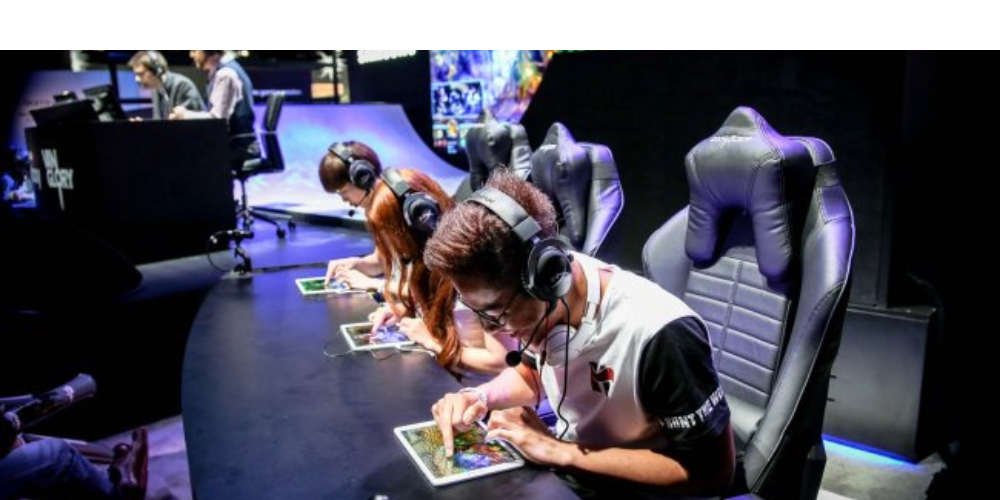The Rise of Mobile Esports: Can it Rival PC and Console Competitions?
- Jul 24, 2024
- 1046

In the last few years, the rapid advancement of mobile technology has sparked a profound transformation across various sectors, with the gaming industry standing out as a particularly dynamic and evolving landscape. As smartphones continue to grow more powerful and ubiquitous, they have not only revolutionized the way we communicate and entertain ourselves, but they have also opened up entirely new frontiers in the realm of competitive gaming, more commonly referred to as esports.
Mobile esports, characterized by competitive gaming on smartphones and tablets, is no longer a niche market. Instead, it has burgeoned into a thriving domain with substantial followings, dedicated professional players, and significant financial investments. This explosive growth has prompted discussions and debates about the potential for mobile esports to seriously rival traditional PC and console competitions, which have long been considered the gold standard in the esports community.
This article will delve into the various factors that contribute to this debate, examining the technological advancements, accessibility, audience growth, and comparative competitive depth of mobile esports to determine whether they can indeed stand on equal footing with their well-established PC and console counterparts.
A Meteoric Rise
Mobile esports have observed an explosive growth trajectory since their inception. Titles like PUBG Mobile and Garena Free Fire have become household names, captivating millions of players across the globe. While once met with skepticism, these games have demonstrated that mobile devices can offer high-caliber gaming experiences, elevating them to a new level within the esports ecosystem.
The accessibility of mobile gaming has played a significant role in this rise, as almost everyone owns a smartphone, making it easier for a broader audience to engage in competitive gaming. Additionally, advancements in mobile technology and infrastructure, such as faster processors, better graphics, and more stable internet connections, have further bolstered the capabilities of these devices, closing the gap between mobile and traditional gaming platforms.
Substantial investments from game developers and external sponsors have also enriched the competitive scene, leading to larger prize pools, more frequent tournaments, and a more professionalized environment. Influencers and content creators have also amplified mobile esports' visibility, attracting even more players to the scene. This dynamic growth showcases not just the current success but also the immense potential for future advancements and expansions within mobile esports.

Wider Accessibility
One significant advantage of mobile esports is accessibility. In today's world, smartphones have become nearly ubiquitous, reaching a level of penetration that far surpasses that of high-end gaming PCs or consoles. This broad availability democratizes participation in mobile esports, allowing individuals from a wide array of socio-economic backgrounds to compete on an almost level playing field.
Unlike traditional gaming platforms, which often require substantial financial investment in hardware, mobile esports is more inclusive. Moreover, many of the popular mobile titles in the esports arena adopt a free-to-play model. This pricing strategy effectively removes another significant barrier to entry, making these games accessible to a larger audience. The low cost of participating in mobile esports, combined with the widespread availability of smartphones, ensures that nearly anyone with a basic mobile device can join in the competitive gaming experience.
Furthermore, the portability of smartphones adds another layer of convenience, enabling players to practice and compete from virtually anywhere, whether they are at home, on public transport, or in public spaces. This enhanced accessibility fosters a diverse and vibrant community of players and fans, contributing to the growing popularity and recognition of mobile esports on a global scale.
The Economic Impact
The economic footprint of mobile esports should not be underestimated either. From sponsorship deals to lucrative tournament prize pools and substantial streaming revenues, there's a considerable amount of financial capital now circulating within this burgeoning sector. Companies are increasingly investing in mobile gaming tournaments like never before, driven by audience engagement metrics that consistently intrigue and captivate advertisers.
Major corporations and brands are recognizing the immense opportunities in this space, leading to a surge in partnerships, endorsements, and promotional activities tailored specifically for the mobile esports demographic. This infusion of resources is not limited to just the top-tier tournaments; even grassroots and mid-level events are seeing unprecedented levels of support and funding.
The ripple effects of this economic activity also extend to allied industries, including peripherals, merchandise, and even travel and hospitality, providing further evidence of the profound impacts of mobile esports on the broader economy. As audience numbers continue to grow and diversify, the financial ecosystem supporting mobile esports is poised for continuous expansion, suggesting a bright and prosperous future for this dynamic and rapidly evolving industry.

Technological Advancements
Enhanced hardware capabilities on modern smartphones have significantly transformed the landscape of mobile gaming, making intricate gaming mechanics not only feasible but smooth and engaging on these handheld devices. With high refresh rate screens, users can now experience faster and more fluid visuals, while advanced, efficient processors offer robust computational power, propelling these devices towards performance levels that parallel those of dedicated gaming consoles and high-end PCs.
Additionally, seamless multiplayer functionalities are revolutionizing the way we engage with others in a gaming context by drastically reducing latency issues that once plagued mobile gaming experiences and were often seen as insurmountable hurdles. These advancements are collectively lifting mobile gaming to unprecedented heights, fostering an environment where complex, graphically demanding games can flourish and compete alongside their console and PC counterparts.
Community Building
A robust community nearly always shepherds the best aspects of any sport, and video games are no exception here! With easy access via social media platforms directly from phones themselves, alongside live streams incorporating real-time chats, the potential for rich interactions is immense. These platforms bring together tight-knit communities committed to seeing their favorites succeed.
Fans and players can engage with each other instantly, share experiences, exchange tips, and celebrate victories as a collective. This digital camaraderie fosters a sense of belonging and unity among gamers, enhancing the overall experience. The continuous connection and interaction within these communities contribute to the growth and evolution of the gaming world, making it a vibrant and dynamic environment for fans and participants alike.
Tournaments & Championships
The presence of prominent global tournaments exclusively dedicated to mobile-based engagements underscores the seriousness of such events among fans and viewers, both within close-knit circles and among competitive gamers. Notable examples include the ESL Mobile Open and Battle Prime, which attract enormous gatherings and have generated mainstream identities that reflect positive growth narratives within these arenas. As the journey continues onward, these events assist in proliferating the credibility and recognition of mobile-based competitive gaming, further solidifying its rapid ascension in the world of esports.